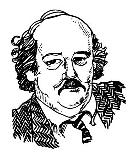(Syndicated to Kansas newspapers Aug. 3, 2015)
 OK, it’s now time to get serious about the wide range of issues that unfolded last week: The $67 million in budget shifts and swaps and the first, though not representative, receipts from higher taxes approved by the Legislature last session.
OK, it’s now time to get serious about the wide range of issues that unfolded last week: The $67 million in budget shifts and swaps and the first, though not representative, receipts from higher taxes approved by the Legislature last session.
For all the hoopla about the budget cuts announced last week by Budget Director Shawn Sullivan—that $50 million cut that was a key to getting the Legislature out of Topeka—it was actually a pretty workmanlike effort. Lots of shuffling of money around, taking back funds that weren’t spent last fiscal year, that sort of thing.
Most notable, and probably important, for all the cutting and shifting of money, nothing got worse.
Now, that $17.6 million that the state swiped from increased federal funding for a program that provides health insurance for children of low-income families wasn’t pretty, but nothing got worse. And, yes, Kansas has the federal government to thank for that additional money that most would have preferred be spent to increase insurance coverage for those kids. No doubt there. But nothing got worse.
That “nothing got worse” may be a key phrase for the state’s leaders and members of the House and Senate seeking reelection next year.
That’s likely where Kansas is now. The shifting and shuffling of money to help balance the state budget actually did very little damage to existing programs and services. Sure, highway (construction) fans don’t like that $8 million was pulled from the Kansas Department of Transportation; it was money that KDOT didn’t spend last fiscal year and which flowed into the new, month-old current fiscal year.
And, chances are good that the shifts and shuffles did less damage to individual agencies than an across-the-board cut of a nominal one or two percent would have caused.
But, the important news from the Statehouse last week is that Kansas now is at the end of the rope. Virtually anything else done to bulk up the budget is going to have an effect on Kansans. It might come as furloughs or layoffs, it might mean digging into existing programs and services, and we’ll notice.
So, that’s where Kansas is now: Out of options for cutting spending. That makes the upcoming election-year session politically important.
There’s plenty of time for lamenting those 2012 income tax cuts on businesses, but practically, besides foreclosing new programs and more spending, the first three years of that reduction in revenue could be covered by ending balances.
We just spent down that extra money.
Now, that extra money is gone and the issues change: What does all this “shrink government” language that shows up on campaign flyers and in gubernatorial speeches actually look like?
The easy part is over. The real decisions are now going to be whether the state needs more money to do what Kansans are used to seeing done: Taking care of the poor, educating the kids, maintaining roads and law and order, and so on. Or, whether lawmakers and the governor can convince Kansans that the state is doing too much for them and their children and neighbors—that smaller government works best.
That’s what the next session—during which legislators are going to be trying to curry favor from their constituents, or special interest groups—is going to come down to. Don’t look for more tax increases in an election year. And, there’s not enough money to do favors for much of anyone. Reduce the sales tax on food? Virtually no chance. Spend more money on K-12 education? We’re locked into a two-year funding program that is unlikely to be held unconstitutional until after the next elections.
We’re about to see what the end of the rope looks like…
